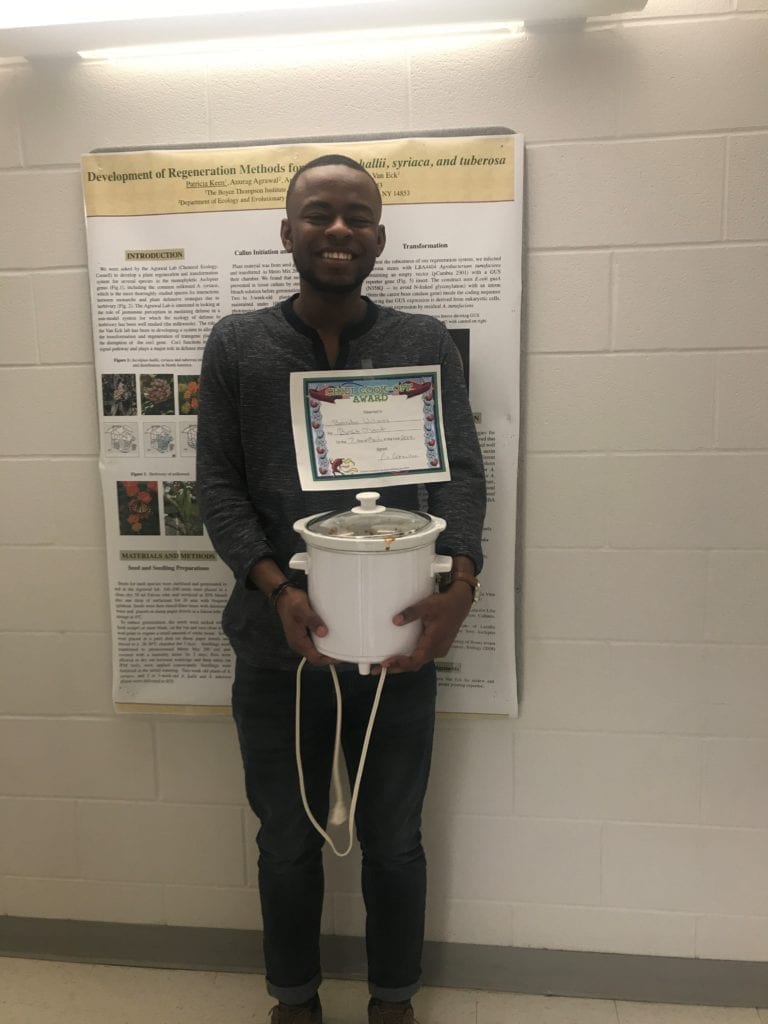Physalis Blog Post
Award-Winning Groundcherry Chili
Award-Winning Chili
Every year the Boyce Thompson Institute hosts a Chili Cook Off with awards for “Best Overall Chili”, “Best Meat Chili”, and “Best Vegetarian Chili”. Although there were many strong contenders this year, the award for “Best Meat Chili”, went to Brandon Williams of the Physalis Improvement Project for his “Groundcherry Chili”.
Featuring groundcherry and tomatillo, this chili is sure to wow your tastebuds. Check out the recipe below!
Groundcherry Chili Ingredients
(Recipe adapted from The Wholesome Dish “The Best Classic Chili” by Amanda Finks)
- 2 large green tomatillos (diced)
- 1 1/2 cups groundcherries (1/2 cup diced) (1 cup whole)
- 1 tablespoon olive oil
- 1 medium yellow onion -diced
- 1 pound 90% lean ground beef
- 2 1/2 tablespoons chili powder
- 2 tablespoons ground cumin
- 2 tablespoons granulated sugar
- 2 tablespoons tomato paste
- 1 tablespoon garlic powder
- 1 1/2 teaspoons salt
- 1/2 teaspoon ground black pepper
- 1/4 teaspoon ground cayenne pepper* -optional
- 1 1/2 cups beef broth
- 1 (15 oz.) can petite diced tomatoes
- 1 (16 oz.) can red kidney beans, drained and rinsed
- 1 (8 oz.) can tomato sauce
Instructions
-
Add the olive oil to a large soup pot and place it over medium-high heat for two minutes. Add the onion. Cook for 5 minutes, stirring occasionally.
-
Add the ground beef to the pot. Break it apart with a wooden spoon. Cook for 6-7 minutes, until the beef is browned, stirring occasionally.
-
Add the chili powder, cumin, sugar, tomato paste, garlic powder, salt, pepper, and optional cayenne. Stir until well combined.
-
Add the broth, diced groundcherries, diced tomatillo, diced tomatoes (with their juice), drained beans, and tomato sauce. Stir well.
-
Bring the liquid to a low boil. Then, reduce the heat (low to medium-low) to gently simmer the chili, uncovered, for 15 minutes.
-
Add whole groundcherries, cover, and continue to simmer for 10 minutes, stir occasionally
-
Cool and serve


